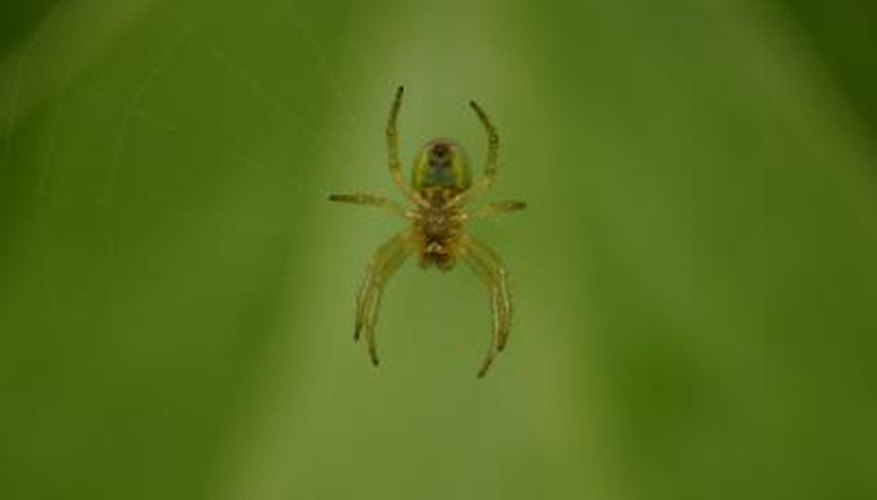As insects go, most species of spider are relatively harmless, seeking only to devour other insects and avoid contact with humans as much as possible. If you've spied little white spiders in your home, they are most likely house spiders (also called comb-footed or cobweb spiders), which are the most common found indoors. Understanding these spiders can help you better cope with their presence and, if necessary, remove them from your home.
House Spider Information
The house spider generally grows to be about ¼ to ½ inch long. From a distance and in bright light, the spiders will appear white, but upon closer inspection you will find that they are light brown or grey, with markings on their backs. These spiders produce webs with thick silk threads in order to catch other insects for food. Only one type of house spider, Latrodectus, is dangerous to humans. It uses nerve venom to kill its prey; and if it bites a human, the bites can be painful and cause temporary numbness.
- The house spider generally grows to be about ¼ to ½ inch long.
- From a distance and in bright light, the spiders will appear white, but upon closer inspection you will find that they are light brown or grey, with markings on their backs.
Moving Indoors
In general, house spiders are a beneficial species. You are most likely to find them in wood piles and outdoor buildings where they help to control the population of insects such as mosquitoes and flies around your home. The spiders are most likely to move indoors in late summer and early fall, when the insect population begins to die off as cooler weather approaches. The spiders themselves will seek a warm place to spend the winter. They avoid humans and will run if confronted; you are most likely to find them in quiet areas in which you don't spend a lot of time, such as the corners of unfinished basements or attics.
- In general, house spiders are a beneficial species.
- You are most likely to find them in wood piles and outdoor buildings where they help to control the population of insects such as mosquitoes and flies around your home.
Preventive Measures
These spiders can actually help you control the insects in your home, but if you want to stop them from coming into your home, you can take certain steps. Clean out or remove all piles of garbage, stone or wood from near your home; spiders love to make webs in these areas since they attract a lot of insects. Inspect the walls and foundation of your home and fill in any cracks larger than 1/8 inch with caulk to take away the points through which the spiders can enter. Vacuum or wipe away all cobwebs and spider webs you find in your home.
- These spiders can actually help you control the insects in your home, but if you want to stop them from coming into your home, you can take certain steps.
- Inspect the walls and foundation of your home and fill in any cracks larger than 1/8 inch with caulk to take away the points through which the spiders can enter.
Killing Spiders
If you cannot tolerate spiders in your home, you can use any number of pesticides to kill them. You can also simply squish them; they will try to run when attacked, and the chances of being bitten by a house spider are very slim even if you provoke it. If you see spiders in one area a lot, treat that area with pesticides to prevent them from returning. It will also help to treat around windows, doors and any cracks that you cannot fill to prevent the spiders from crossing these ares and entering your home.
- If you cannot tolerate spiders in your home, you can use any number of pesticides to kill them.
- If you see spiders in one area a lot, treat that area with pesticides to prevent them from returning.
